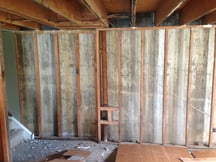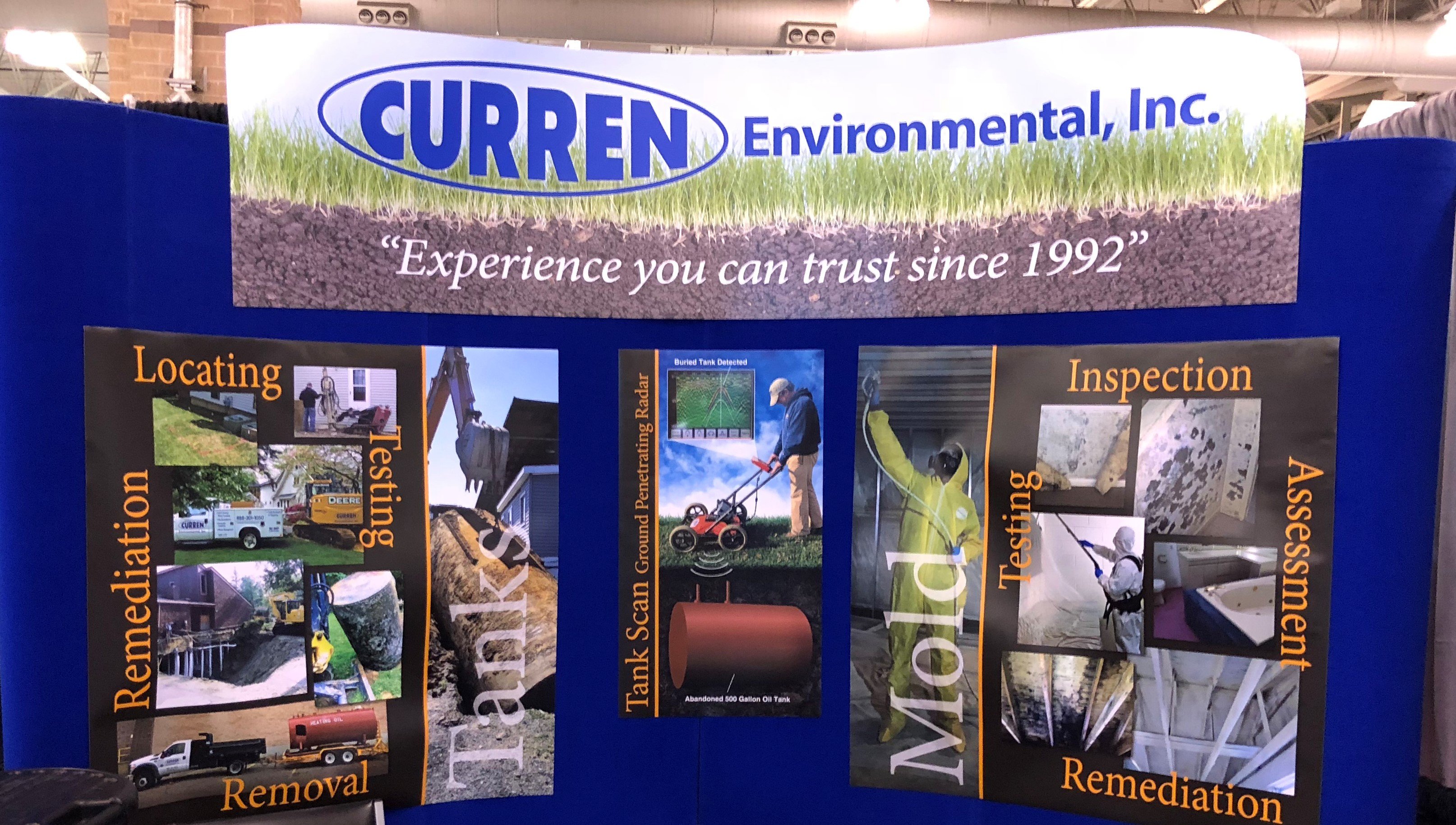How to Interpret Mold Test Results or
What do "My Mold Test Results Mean"?
(We can review your mold data, average costs are between $200 and $250 )
Defined sampling objectives help to develop a scope (sampling strategy) that includes the data required and hence the type of samples to take (i.e., viable or non-viable), the minimum number of samples to take, when to take them, and how to interpret the resulting data. Any environmental professional performing mold testing, including mold spore trap sampling, mold tape lift sampling, mold swab sampling, or mold viable air testing should draft a report defining the following:
- What testing was performed, and where the testing was performed (rooms, indoor and/or outdoor)?
- Why was testing performed (what was the objective), site conditions (visible mold growth, water damaged area, a background sample location)?
- A detailed explanation of the results and what the results mean.
- This is the most basic of data that should accompany any testing data. If you do not have this data, then apparently you did not hire a professional. Professionals do not let clients (laymen) draw their own conclusions.
What are the permissible limits of mold?
There are No Federal or State Agency established Maximum Exposure Limits (MEL) or threshold level values for airborne indoor mold. So there are no federal government standards for mold.
Fact: Average mold spore count can vary from room to room
Why are there no standards for mold levels?
The reason is that setting the levels would be difficult for a variety of technical reasons, including limitations in air sampling techniques, individual variability in sensitivity to microbial exposure among the human population, the occurrence of different types of biological and chemical pollutants in the indoor environment, and limited data on the exposure-response relationship in humans.
Take the following photo as an example:

The spotted area is obviously mold. The EPA does not recommend sampling an area where mold is obviously present. To sample this area would be a waste unless you were incredibly curious as to what type of mold is growing. Hopefully, you wouldn't care about the type of mold and really be focused on what caused the mold to grow. Any visible mold growth caused by water, moisture, condensation, etc., should be removed.
Now maybe you have an area that looks like the following photo, but you smell musty odors or generally have a sense of poor health when you are in this area. We call this a compliant room.

This photo shows a basement that was recently refinished before listing the property for sale. Air testing was performed and elevated levels of spores were detected. The following is what we found as we started removing the new Sheetrock:

If there are no government-established mold standards, what do people follow?
Due to the lack of set government standards, the environmental consulting industry follows general principles when evaluating mold test results. On a basic level, mold levels should be higher outside than inside, but the details of the test results when making this comparison is extremely important. A mold testing report should cover the following topics:
What are the dominant molds present in the sample obtained from the target or complaint room? Are the molds present in the control samples? For example, suppose Cladosporium dominates in the target or complaint room but is insignificant in outdoor and control samples. In that case, we can conclude the source is in the complaint room, even though Cladosporium originates from outdoor sources.
Perform an evaluation for the presence of opportunistic types of molds. These so-called opportunistic molds (marker) fungi are frequently found on water-damaged building materials. Their presence can point to a long-term moisture issue. These fungi include Aspergillus and Penicillium species, Acremonium, Sporobolomyces, Stachybotrys chartarum, Memnoniella echinata, Tritirachium oryzae, Ulocladium botrytis, chartarum, Cladosporium, and Chaetomium. These are molds that are not typically recovered in the outside air, so when they are found outside, they are in generally low levels. Conversely when they are found indoors these molds typically point to an indoor water issue.

The physical condition of the area sampled (water damage, odors, and water or past water damage present). Plain and simple, mold needs moisture, and environmental professionals inspect structures for excessive moisture. Water-damaged building materials (basement Sheetrock wall) that were replaced BUT not remediated can hide mold growth and mold spores.
As an example on how mold testing should go, take a project where the client wants to determine if there are elevated mold spore concentrations and/or indoor amplification sources in a complainant room. In this case, the client suspects that there is an issue pertaining to mold in a specific room. The sampling objective is to compare total airborne spore concentrations from the complainant room with those from outdoor and non-complaint rooms. This would answer the question of whether levels of mold spore concentration were elevated in the complaint rooms compared to outdoor and non-complaint rooms.

How do you compare (interpret) the sampling data from mold spore trap air samples?
You can compare the dominant spore types (and their concentrations) from the target or sampled complainant room with those from control samples (other non-compliant rooms or outdoor area).
Most data reviews by Curren average between $200 and $250.00
Another objective is to evaluate whether there were amplification sources in the complainant's room such as water damage. You do not just want to confirm the presence of mold but also why is the mold present and what created the environment for the mold to grow. In reviewing the test results, evaluation on the following would be performed: evaluation for species of mold, with special attention to opportunistic spores.
Evaluation of results when assessing a general complaint area of a structure. Comparative evaluation of results from the area of complaint to background sample results (non-complaint area).
You should not expect that any company testing for mold would only provide raw laboratory data. All lab data must be summarized by the mold consultant explaining the results of the testing performed. The environmental professional needs to put forth standards for judging what is an acceptable, tolerable, or normal quantity of mold. The results of samples taken in all situations cannot be interpreted without a physical inspection of the contaminated area or without considering the building’s characteristics and the factors that led to the present condition.
When evaluating mold test results, the consultant will evaluate patterns among the indoor mold found, as different molds grow on different organic materials and at different moisture levels such as the following:
Aspergillus/Penicillium are early colonizers of damp building materials.
Chaetomium or Stachybotrys are later colonizers of chronic moisture/wet areas.
Ascospores and basidiospores are common outdoor mold, when found inside their presence may be the time of year or poorly filtered outdoor air
To establish a baseline for any particular site, professionals compare indoor and outdoor mold spore levels. Meaning when you do a mold assessment you collect indoor samples and at least one outdoor or background sample.


You can always find outdoor molds indoors, as they can be carried inside by people and by airflow. You do not TYPICALLY expect to find outdoor molds in higher concentrations indoors than outdoors, but it can happen under certain conditions. When you have this situation then the indoor environment is creating an environment that is beneficial for mold, not an environment that is desirable for human occupancy.
The major problem with mold testing is due to the consultant not providing an opinion on the test results and failing to clearly define the sampling objectives prior to testing. In their defense, many people in the mold industry don't know what they are doing. The industry is unregulated and licensing is only available in 11 states.
The next worst is homeowner DIY mold testing. Doing your own mold testing is a terrible idea. Have you ever done it before? So even if you follow directions, you won't do it like a pro. Have you done thousands of sites?
In many situations, the Mold company fails to clearly define the objectives for taking surface or air samples for microbial analysis and is really more interested in giving you costs to remediate the mold. Some just want to charge you for testing, you have to understand millions of homes, everyone has multiple rooms, mold testing is big, and knowing test results mean, much harder.
The bottom line if you see mold, the source of the growth must be found, fixed and then the mold remediated.
Want your data reviewed? Most data reviews by Curren average between $200 and $250.00




